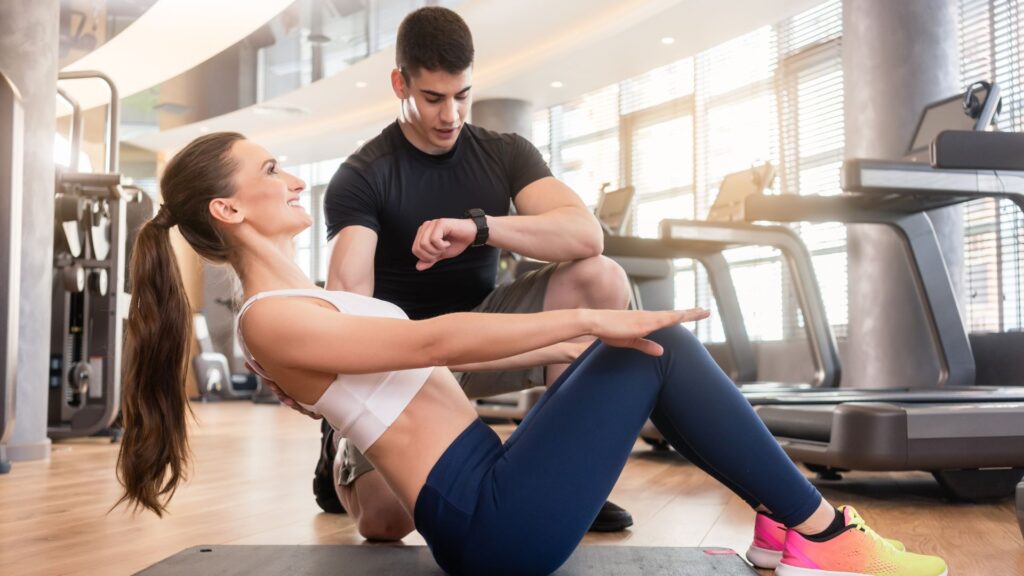
Losing Anything in Life is Risky. Losing Weight Effectively is Not
You’re well aware of the need of making time for a regular exercise routine. But how can you know if you’re making the most of that time and improving yourself completely? You may need to choose a full-body exercise that targets numerous muscle groups at once. Complete body workouts are designed to work all of the major muscle groups in a single session. If you want to get the most out of your workout, gain muscle without adding fat, and boost your health in general, you should perform a variety of isolation and full-body exercises.
Choosing the appropriate muscle-building, body shaping or fat burning workout program is important if you are to maximize the time you spend in the gym and get clear body changing results. Some people are too quick to hop onto the first program they find without really thinking through what they are looking for in a workout program. Each type of program has its own pros and cons so getting straight in your mind what each one has to offer will make the decision of which program is right for you quite clear.
This article discusses the main benefits of using a full-body workout, as well as what a full-body workout comprises and the expected results when you participate in a certain activity. Continue reading to find out what Sirwiss-partnered trainers have to say about the topic.

Calories Burned and Muscle Gained
Full-body workouts are those that focus on working out all of the major muscle groups in one go. To get the most out of your workout, gain lean muscle, and boost your health, try performing a combination of isolated and full-body workouts.
What Is a Full-Body Workout?
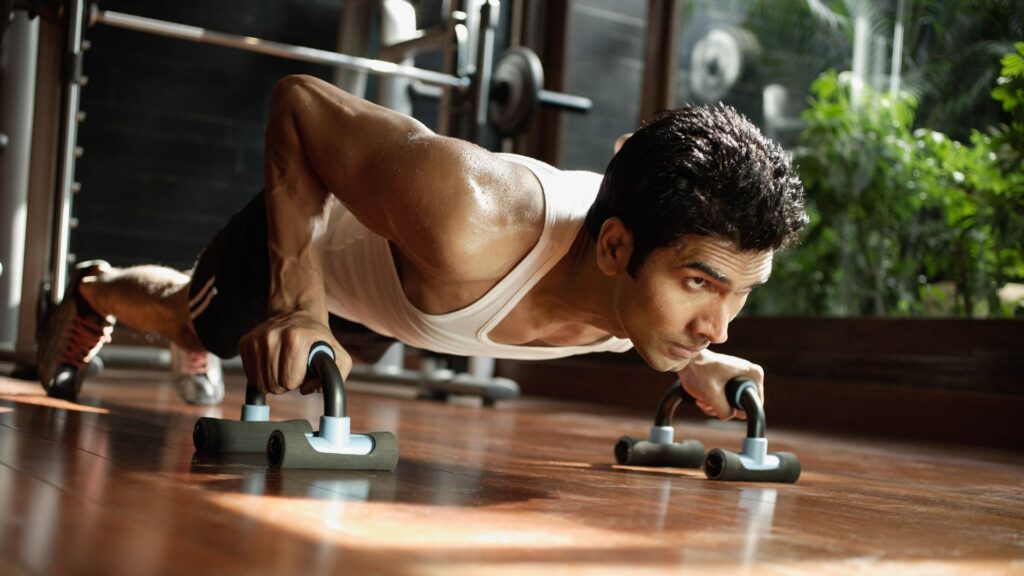
A full-body workout, often called a total-body workout, is an exercise program that aims to strengthen the entire body in one go. Compound exercises, which engage numerous muscle groups at once, are one option for a full-body workout, as is the technique of supersetting, in which a series of isolated exercises is followed by one another. To efficiently increase heart rate and build muscle throughout the entire body, a full-body workout plan combines strength training and cardio. Bodyweight exercises, circuit training, and high-intensity interval training are all examples of effective full-body workouts. To get the most out of your full-body training routine, be sure to schedule in rest days.
Benefits of Doing Full-Body Workouts
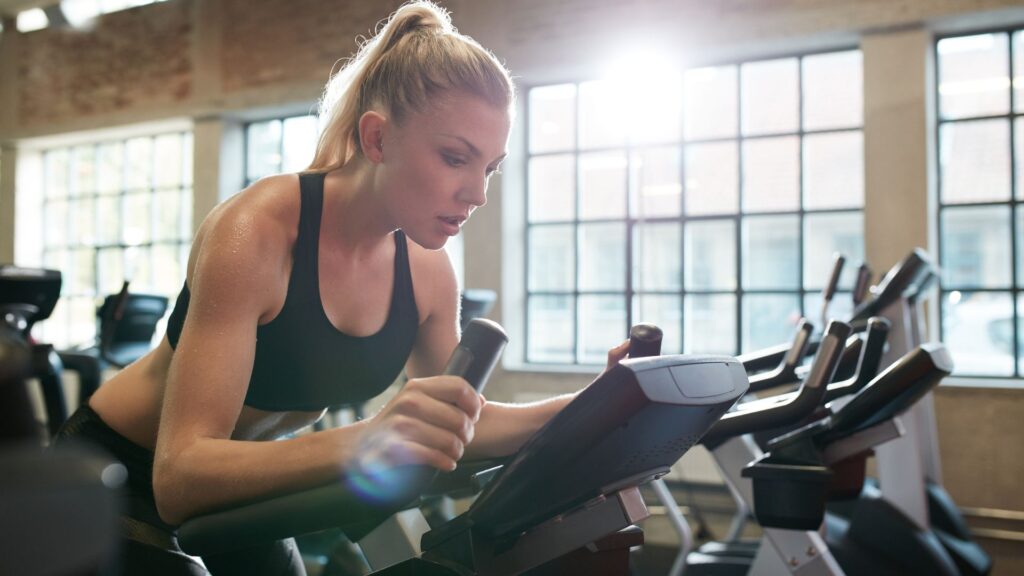
Full-body exercises have a number of advantages.
1. Full-body workouts build strength. Muscle-building workouts are beneficial for anybody, not just bodybuilders. Having a strong physique as a whole helps in both athletic performance and daily activities. The finest full-body workouts target all the major muscular groups, from the abdominals to the triceps to the legs and back.
2. Full-body workouts support better overall physical health. Consistent physical activity has been shown to reduce resting heart rate, lower blood pressure, and lower the chance of developing cardiovascular disease.
3. Full-body workouts can be a convenient home workout. It is simple to perform a full-body workout in the comfort of your own home thanks to the abundance of bodyweight exercises that focus on various muscle groups. If you want a more challenging workout at home, you might want to consider buying some dumbbells or a kettlebell.
4. Full-body workouts are efficient exercises. A solid full-body exercise program will train both your upper and lower body muscles in a single session. As a result, you may be able to get in shape faster.
Guidelines for a Total-Body Workout
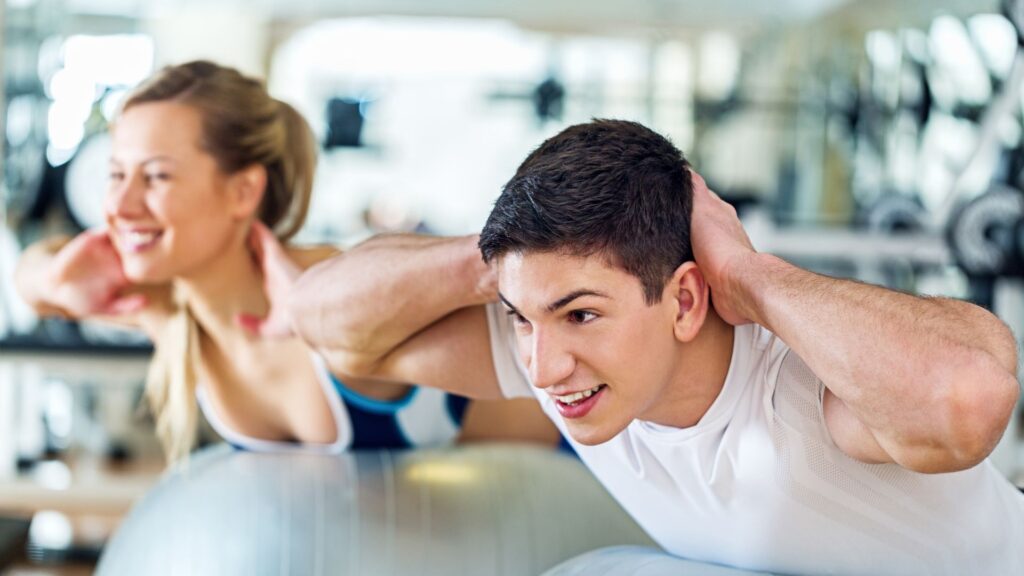
Follow these general steps for conducting a full-body workout plan at home.
1. Warm Up. The best way to prevent muscular damage and get your body ready for a more intense workout is to warm up first. Squats, push-ups, planks, and jumping jacks are all excellent warm-up activities.
2. Focus on Compound Exercises. Compound exercises, in contrast to isolation exercises, which focus on a single muscle group, work several muscle groups at once. You may get a well-rounded full-body workout in a short amount of time if you concentrate on compound movements. The recommended range of repetitions each workout is 8-10 times.
3. Cool Down. The cool-down is an important component of your workout since it helps you avoid injuries and speeds up your muscle recovery, which means you’ll feel less sore the next day. After a complete workout, it is important to rehydrate and stretch the muscles you just worked.
4. Incorporate Rest Days. Full-body exercises on Monday, Wednesday, and Friday, with rest or light cardio on the other days of the week, could be a decent starting point for a beginner’s fitness routine. Days off between workouts are essential for muscular recovery.
Full-Body Exercises
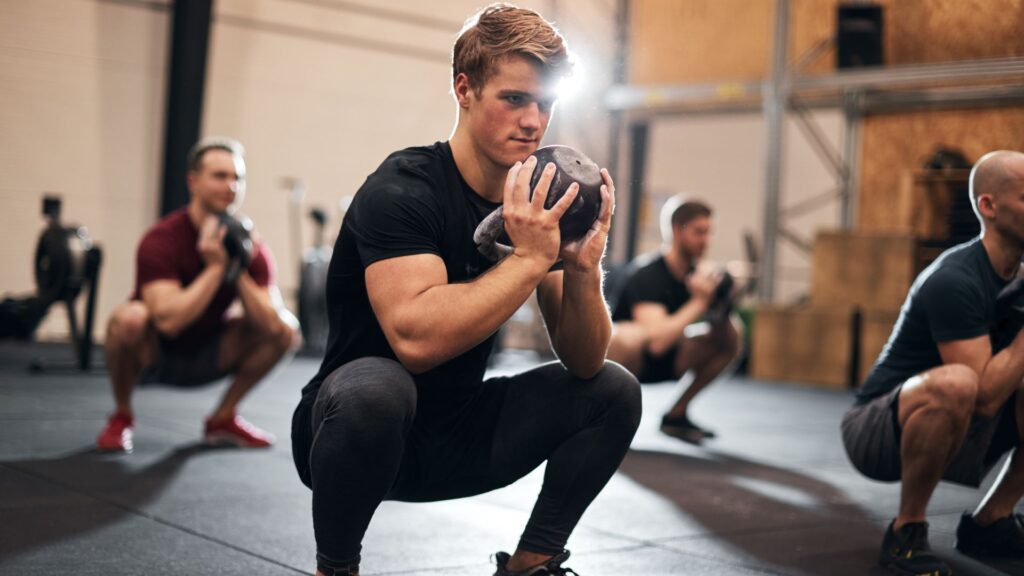
You can get a total-body workout by doing any of these moves.
1. Burpees: When looking for a full-body exercise, burpees are an excellent option because they engage the abdominals, glutes, quads, deltoids, and hamstrings. A burpee consists of two distinct phases: the first is a jump from a standing to squatting position, followed by a kick back into a planking position. When your set is over, leap up and do a set of jumping jacks before moving on. Burpees are an excellent full-body exercise that, if done correctly, has the potential to greatly improve aerobic fitness and stamina. A few examples of the numerous possible variations of the burpee are the box jump, the tuck leap, and the pull-up.
2. Deadlifts: The deadlift is an excellent exercise for developing core strength in addition to strengthening the upper and lower back, erectors, hip flexors, glutes, quadriceps, and hamstrings. Strengthening your grasp is another perk. To complete this exercise, put some weights on a barbell and lay it on the floor. A barbell deadlift is performed by bending at the hips and knees before straightening out. Bring it down even further. There is a dumbbell-based version of the standard deadlift known as the Romanian deadlift.
3. Goblet Squats: If the weight is within the lifter’s ability to control throughout the set, a goblet squat can be done with a kettlebell or dumbbell. Squat down to a starting position with the weight held about chest-high. A correct squat involves lowering oneself till one’s thighs are perpendicular to the ground. Find your footing again and begin over.
4. Plank Jacks: The “plank jack” is a type of bodyweight exercise that combines the jumping jack motion with a standard plank. To do plank jacks, get into a high plank stance by placing your hands beneath your shoulders. It’s important to maintain a straight upper body and lower body alignment while you bounce your feet out and back. Plank jacks are like a full-body workout you can do at home because they work your abs, legs, and back.
Upper-Body Exercises

You may get a full-body workout by combining these steps with lower-body workouts.
1. Push-ups: You’ll strengthen your pecs, triceps, and the front deltoids by doing push-ups. Raise your body so that it is in a plank position, but with your arms wider apart than shoulder-distance. You should stoop down until your chin is almost touching the floor, then push up again using your arms.
2. Pull-ups: Bodyweight exercises like pull-ups work the upper body by strengthening the rhomboids, triceps, and deltoids in addition to the back and biceps. Performing pull-ups is another great way to strengthen your grip. To perform a pull-up, a person must hang from a horizontal bar called a pull-up bar while holding onto the bar with both hands. Make sure your chin is above the bar by pulling yourself up using your arms and back. When doing pull-ups, the back is typically worked harder by keeping the hands facing away from the body. Alternately, you can perform a chin-up with your palms facing inward to strengthen your biceps.
3. Knee Crunches: The knee crunch is a great bodyweight workout for toning your upper abs and bolstering your core. When compared to regular crunches and sit-ups, knee crunches present a formidable challenge due to their equal range of motion. Knee crunches are performed by lying on one’s back with one’s knees bent and one’s feet flat on the floor. Raise your knees to a 90-degree angle, and then crunch your abs to pull your head down toward your knees. After completing the required number of repetitions, return to the beginning position.
4. Lat Pulldown: The muscles of your arms and back are worked together in a lat pulldown, making it a complex exercise. Sitting in front of a pulldown bar attached to a cable machine, you can perform the lat pulldown exercise. Take hold of the bar and bring it down to your upper chest by bending your elbows. You can do as many repetitions as you like by raising the bar each time.
5. Bench Press: The barbell bench press is a great upper body workout that targets the pecs and the deltoids. Lower-body stability is maintained by the abdominals, back, and buttocks. Moving the barbell directly upward from the chest while lying flat or on an incline with a curved back. Dumbbells can also be used for the bench press exercise.
6. Overhead Press: The overhead press is an exercise that targets the shoulders, upper chest, and triceps; it is also known as the shoulder press. You’ll need to use your back and stomach to keep your body steady as you lift heavy objects straight above your head. Dumbbell presses, military presses, and push presses are all variants on the classic overhead press.
Lower-Body Exercises
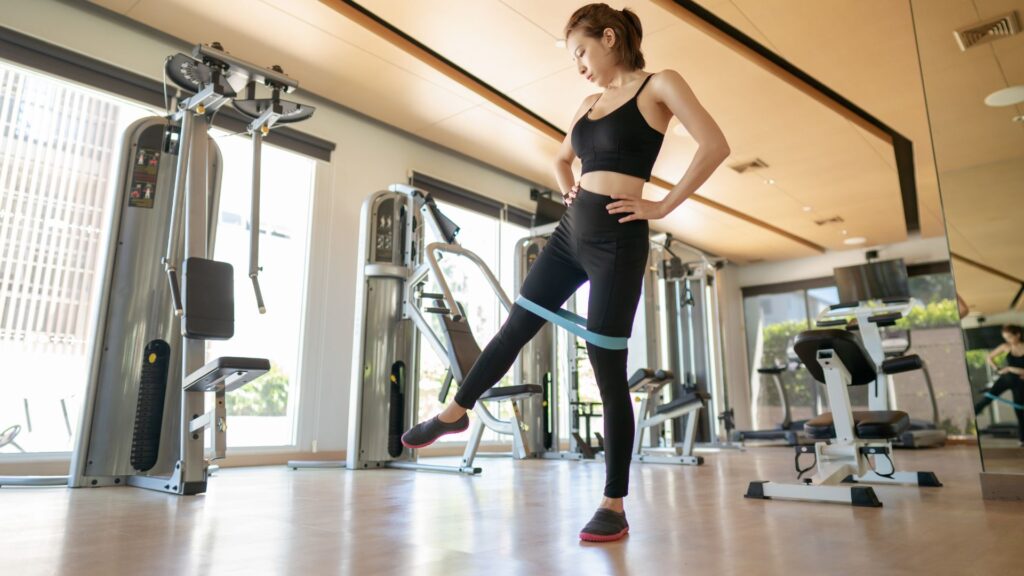
Combine these moves with upper-body workouts for a well-rounded workout.
1. Lunge Twist: Lunge twists, also known as lunges with a twist, involve rotating your midsection to the left or right while in the lunge position, standing back up, and repeating with a twist in the other direction. Turn with your hips, not your knees. Lunge twists can be made more difficult by adding a medicine ball, kettlebells, or dumbbells to the exercise.
2. Squats: To strengthen your lower body, try doing some squats. This exercise targets your quads, glutes, hamstrings, and hip flexors. The back and abdominal muscles are also used during squats to ensure proper form. While maintaining a shoulder-width stance, sit down so that your thighs are parallel to the floor and your hips are lower than your knees. Squatting can be used in a variety of contexts. Squats can be done with just your bodyweight, or with a barbell and weights, dumbbells, or resistance bands. Squats can be performed on a squat machine as well. The front squat and the back squat are two examples of squat variations.
3. Calf Raises: The calf raise, also known as the standing calf raise, is an exercise that uses only your body’s weight to strengthen the muscles in your lower legs. Calf raises are performed by standing erect with feet hip-width apart. To stand on your tiptoes, activate your calf muscles by pushing down into the balls of your feet. You should revert to a standing position and then repeat the sequence. Calf raises may be performed with no special equipment, but you can increase the difficulty by gripping a kettlebell or dumbbells.
4. Leg Raises: The leg rise, sometimes called the straight leg raise or the laying leg raise, is an abdominal workout that uses only your body weight to strengthen your lower abs. In addition to the abdominals, the hip flexors, the hamstrings, and the lower back all get a workout from leg lifts performed correctly. Attaching ankle weights or performing a hanging leg lift are two more challenging options.
5. Hamstring Curl: Leg curls, or hamstring curls, are an individual exercise for strengthening the hamstring muscles in the back of the legs. Laying face down on the floor, perform hamstring curls. Keep your back straight and your abdominals engaged while you bend your knees. Raise your lower legs to your glutes and slowly extend them. Keep going until you’ve completed your set. Lying leg curl machines are very useful for working the hamstrings.
6. Leg Extensions: The quadriceps are targeted in a leg extension, which is also known as a knee extension. A leg extension machine (LEM) is needed for this workout. The LEM has a seat and a padded bar that presses against the legs to increase strength and flexion. (A resistance band or ankle weights are two alternatives.) An exercise on a leg extension machine consists of sitting with one’s legs extended and pushing a padded bar away from one’s torso.
How to Work Out Safely and Avoid Injury

Before starting any kind of workout routine, it’s important to check in with your doctor if you have any kind of history or symptoms of a health problem. Safe and effective exercise can only be achieved through correct form, but you may need to make adjustments to each exercise to meet your specific goals. Choose a weight that challenges you but that you can still keep under complete control. Listen to your body carefully throughout exercise; if you feel any pain or discomfort, stop right once.
A consistent training routine that includes warm-ups, rest, and nutrition will yield the best results and help you gain muscle and strength. In the end, how well you recover from your workouts will determine how well you do. If you want to train the same muscle groups again after resting for 24 to 48 hours, you won’t get the recuperation you need.
Compound exercises are effective for toning and slimming the entire body since they increase the intensity of the activity. Because of how convenient these short workouts are, you can do them almost anywhere. Exercises that work on your entire body are great for your health because they help you burn more calories and burn more fat, and they also help you get stronger and more fit. Talk to your doctor or a skilled personal trainer if you need help deciding whether compound or isolation workouts are better for you.